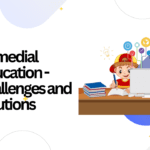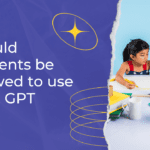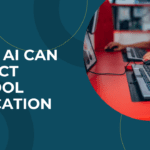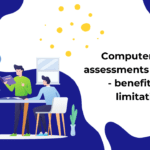Table of contents
- Overview
- How technology improves the quality of education delivery.
- Conclusion
Overview:
Technology increasing availability and affordability have become more accessible to schools and educators, allowing them to integrate technology into their teaching practices. However, it is essential to note that technology must replace effective teaching and pedagogy. Instead, it is a tool that can be used to enhance and support teaching and learning.
Educators must be mindful of the potential pitfalls of technology, such as the digital divide and potential for distraction, and work to address these issues to ensure that all students have equal access to technology and are using it in a productive and focused manner.
Plenty of online learning platforms focus on delivering quality education to learners.
As the technology adoption continues, our expertise has developed an innovative platform SETU that helps in the easy nurturing of students effectively.
Here are a few ways technology has improved education delivery quality.
How technology improves the quality of education delivery.
Technology has significantly improved access to information, improved teaching and learning, and produced new opportunities for creativity and collaboration in education.
Digital simulations and models:
In the traditional way of learning, sometimes students need help understanding some concepts. Whereas digital simulations and models provide a safe and interactive learning environment, allowing students to experiment, explore, and test their ideas without the risk of real-world consequences. They can help students develop critical thinking skills, problem-solving abilities, and practical knowledge in various fields.
Improved Communication:
Technology has dramatically improved communication for students, providing them with virtual learning environments, social media platforms, email, online collaboration tools, mobile devices, video conferencing, and chatbots. These technologies have made it easier for students to communicate with their teachers and peers, collaborate on projects, access resources, and enhance their learning experience.
Effective assessments:
Practical assessments are aligned with the learning goals and objectives of the course or curriculum, produce consistent and unbiased results, reflect real-world tasks, are given at appropriate times, use a variety of formats, and provide clear instructions and constructive feedback.
By using effective assessments, educators can improve the quality of instruction and promote student learning and success. SETU is an AI-assisted platform that helps students to participate in assessments effectively.
Improved Access to Information:
Technology has made it easier for students and teachers to access vast information from anywhere in the world. Online resources, digital libraries, and e-books have allowed students to access up-to-date information on any subject.
Personalized Learning:
Technology has made it possible to create personalized learning experiences for students. Adaptive assessments, personalized learning paths, and customized content can be tailored to each student’s individual needs and abilities.
Interactive Learning:
Technology has made learning more interactive and engaging. Multimedia content, simulations, virtual reality experiences, and gamification have made learning more enjoyable and effective.
Data-Driven Decision-Making:
Technology has provided teachers with data on student performance, allowing them to make data-driven decisions to improve teaching strategies and student outcomes.
Professional Development:
Technology has enabled teachers to access professional development resources, such as online courses, webinars, and coaching, to improve their skills and stay up-to-date with the latest teaching practices.
Conclusion:
Technology can create more engaging and effective learning environments, increase access to educational resources, and provide opportunities for personalized and differentiated learning. By embracing technology as a tool for education, educators can help to ensure that students are prepared for success in the digital age.








Leave a reply